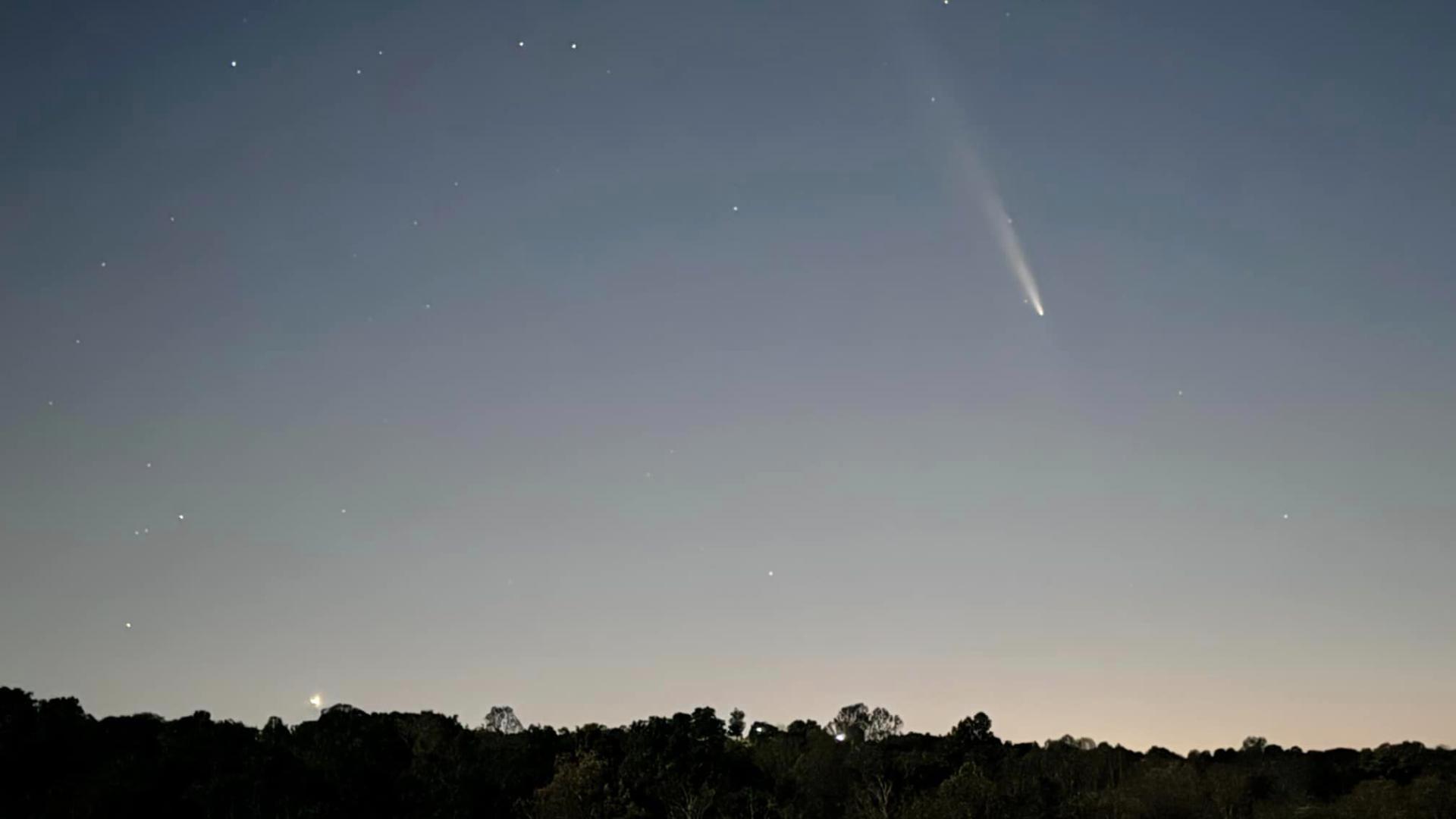UNITED STATES, — You may be able to spot a rare, bright comet in the night sky this weekend.
comet Tsuchinshan-Atlas (C/2023) is passing by Earth, and should be bright enough to see with the naked eye, although, binoculars and telescopes will offer a better view.
Here's how you find it:
Look west about 90 minutes after sunset for the best view. The comet climbs higher in the sky each day, so you’ll need to look up a little from the horizon to locate it.
Every day, it becomes slightly less visible, until the end of October.
What is a comet?
Comets are frozen leftovers from the solar system’s formation billions of years ago. They heat up as they swing toward the sun, releasing their characteristic streaming tails.
In 2023, a green comet that last visited Earth 50,000 years ago zoomed by the planet again. Other notable flybys included Neowise in 2020, and Hale-Bopp and Hyakutake in the mid to late 1990s.
Where did comet Tsuchinshan-Atlas come from?
The comet, also designated C/2023 A3, was discovered last year and is named for the observatories in China and South Africa that spied it.
It came from what’s known as the Oort Cloud well beyond Pluto. After making its closest approach about 44 million miles (71 million kilometers) of Earth, it won't return for another 80,000 years — assuming it survives the trip.
Several comets are discovered every year, but many burn up near the sun or linger too far away to be visible without special equipment, according to Larry Denneau, a lead researcher with the Atlas telescope that helped discover the comet.

